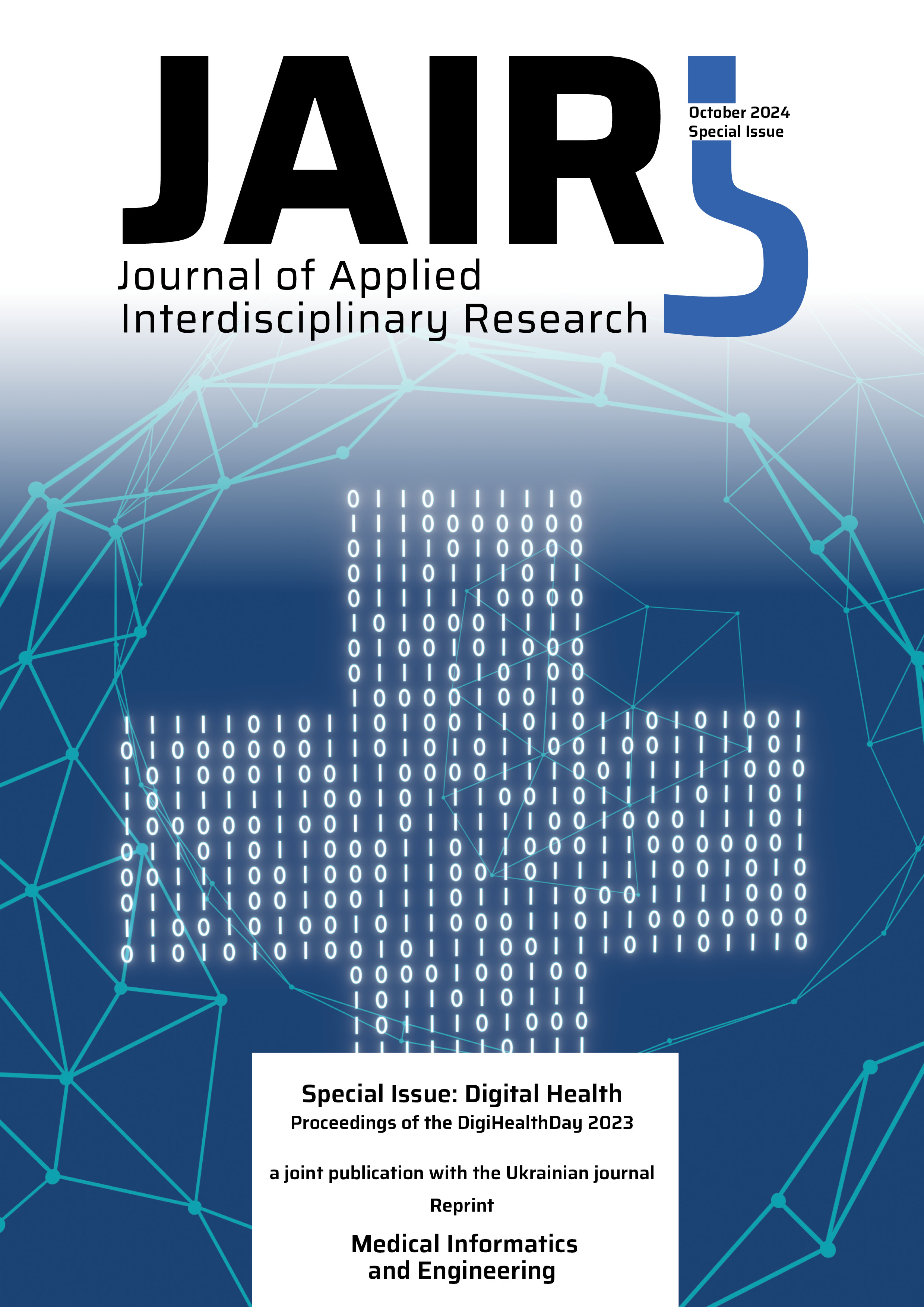Vector Diagnosis of Patient Conditions in Telemedicine
Main Article Content
Keywords
telemedicine, transdisciplinary approach, vector diagnosis of patient conditions, data discrimination, information asymmetry, big data, error by omission, data envelopment analysis (DEA)
Abstract
Telemedicine is a rapidly growing field in healthcare, offering wide-ranging opportunities to address various challenges faced by healthcare workers and patients. Despite its many benefits for both patients and healthcare providers, there are still a number of unresolved issues. This study aims to explore the potential of telemedicine by conceptualizing it as the interplay of two vectors: the patient's condition and technological readiness for consultation.
Research Objectives. The patient's condition vector includes physiological, biochemical, and clinical indicators. The technological readiness vector is defined by the treating physician's competence, the consultant's expertise, modern information processing capabilities, and the availability of necessary time, among other factors.
Conclusions. 1. Telemedicine consultations require a robust real-time medical data management system that allows consultants and attending physicians to efficiently process data, retain validated data for patient-specific recommendations, and enhance the global telemedicine framework with decision-making expertise. 2. Integrating big data analytics can improve the prediction and identification of disease diagnoses and prognoses, aiding in the development of effective strategies for complication prevention and disease treatment. Real-time communication with each patient and complex data processing can only be achieved through artificial intelligence. Manual intervention is insufficient for serving thousands of users simultaneously. 3. It's crucial during telemedicine consultations to consider not only the static indicators of the patient's condition but also their baseline data, stable condition indicators from previous studies, and personalized correlation galaxies. Recommendations based solely on the analysis of the patient's status during the telemedicine session risk incorrect conclusions. 4. Biosemiotics, which focuses on the language and rules of signals and codes in biological systems, combines ideas from systems theory, information theory, and linguistics. This integration may offer a new perspective on the classification and interpretation of biological and medical signaling. A coherent theory of biosemiotics needs to be developed.
References
2. Arrow KJ. Uncertainty and The Welfare Economics of Medical Care. American Economic Review.1963; 53 (5):941–973.
3. Ioannidis JP. The Mass Production of Redundant, Misleading, and Conflicted Systematic Reviews and Meta-analyses. Milbank Quarterly. 2016;94(3):485–514. https://doi.org/10.1111/1468-0009.12210
4. Greaves RF, Bernardini S, Ferrari M, et al. Key questions about the future of laboratory medicine in the next decade of the 21st century: A report from the IFCC-Emerging Technologies Division. Clinica Chimica Acta. 2019;495:570–589. https://doi.org/10.1016/j.cca.2019.05.021.
5. Zwaan L, Olson APJ. When Measuring Is More Important than Measurement: The Importance of Measuring Diagnostic Errors in Health Care. The Journal of Pediatrics. 2021;232:14–16. https://doi.org/10.1016/j.jpeds.2020.12.076
6. Mintser OP, Sukhanova OO, Mokhnachov SI. Information asymmetry as a source of errors in telepediatrics. Ukrainian Medical Journal. 4(156):92–94. https://doi.org/10.32471/umj.1680-3051.156.244201
7. Major I. Two-Sided Information Asymmetry in the Healthcare Industry. International Advances in Economic Research. 2019;25(2):177–193. https://doi.org/10.1007/s11294-019-09732-9.
8. Rinke ML, Singh H, Heo M, et al. Diagnostic Errors in Primary Care Pediatrics: Project RedDE. Academic Pediatrics. 2018;18(2):220–227. https://doi.org/10.1016/j.acap.2017.08.005.
9. Steinberg Goodman & Kalish. Diagnostic Errors Common in Pediatric Practices. Medical Malpractice; 2020. https://sgklawyers.com/blog/2020/08/pediatric-diagnostic-errors/.
10. Dadlez NM, Adelman J, Bundy DG, Singh H, Applebaum JR, Rinke ML. Contributing Factors for Pediatric Ambulatory Diagnostic Process Errors: Project RedDE. Pediatric Quality & Safety. 2020;5(3):e299. https://doi.org/10.1097/pq9.0000000000000299.
11. Cooper WW, Seiford LM, Tone K. Data Envelopment Analysis: A Comprehensive Text with Models, Applications, References, and DEA-Solver Software. Boston: Kluwer Academic Publishers; 2000. 318 p.
12. Charnes A, Cooper WW, Lewin AY, Seiford LM. Data Envelopment Analysis: Theory, Methodology, and Applications. Springer Netherlands; 1994. https://doi.org/10.1007/978-94-011-0637-5.
13. Morgunov EP, Morgunova ON. Brief description and example of practical application of the Data Envelopment Analysis method V0.1. Available from: http://www.morgunov.org/docs/ DEA_intro.pdf


